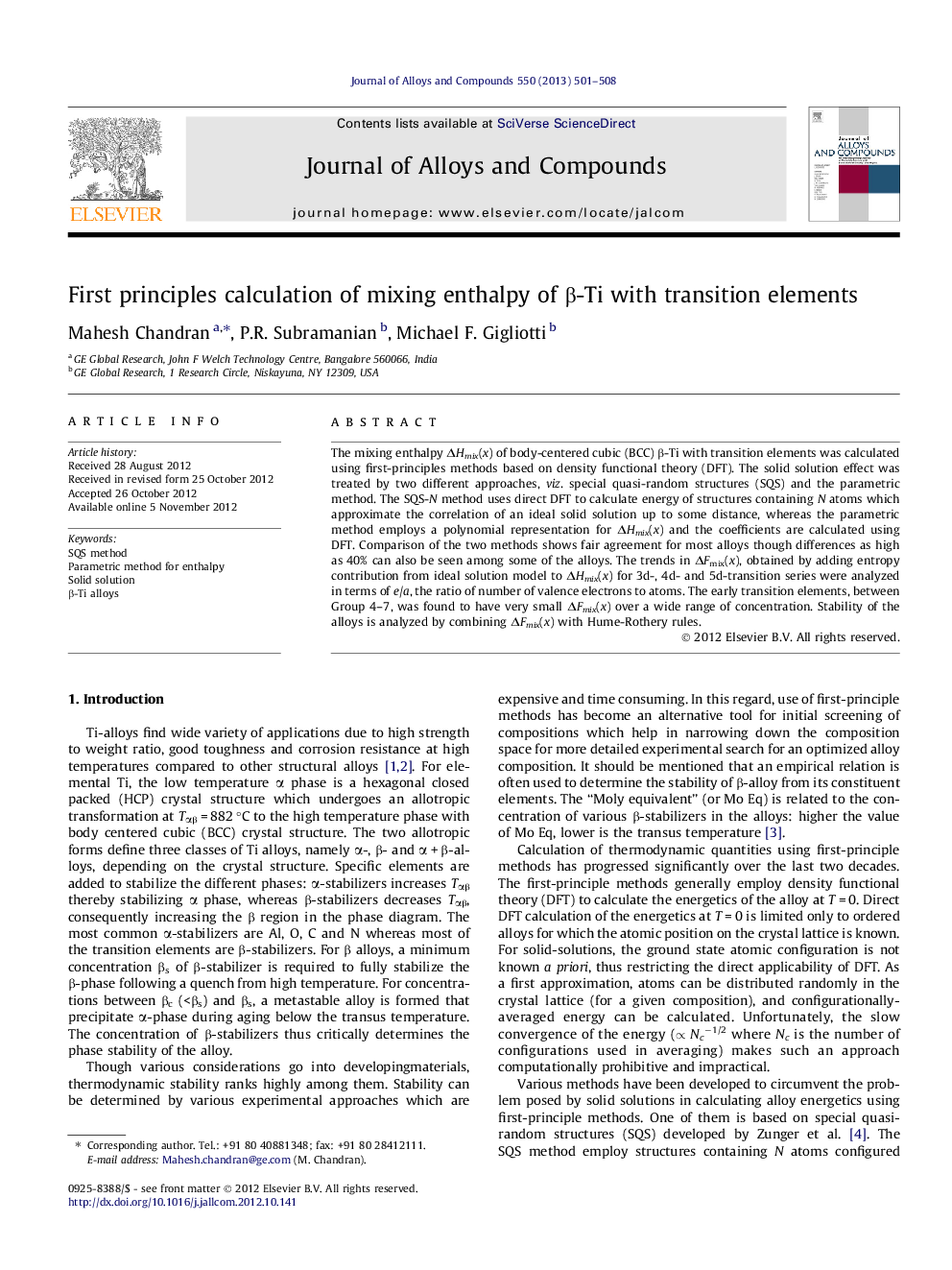| کد مقاله | کد نشریه | سال انتشار | مقاله انگلیسی | نسخه تمام متن |
|---|---|---|---|---|
| 1615119 | 1516343 | 2013 | 8 صفحه PDF | دانلود رایگان |

The mixing enthalpy ΔHmix(x) of body-centered cubic (BCC) β-Ti with transition elements was calculated using first-principles methods based on density functional theory (DFT). The solid solution effect was treated by two different approaches, viz. special quasi-random structures (SQS) and the parametric method. The SQS-N method uses direct DFT to calculate energy of structures containing N atoms which approximate the correlation of an ideal solid solution up to some distance, whereas the parametric method employs a polynomial representation for ΔHmix(x) and the coefficients are calculated using DFT. Comparison of the two methods shows fair agreement for most alloys though differences as high as 40% can also be seen among some of the alloys. The trends in ΔFmix(x), obtained by adding entropy contribution from ideal solution model to ΔHmix(x) for 3d-, 4d- and 5d-transition series were analyzed in terms of e/a, the ratio of number of valence electrons to atoms. The early transition elements, between Group 4–7, was found to have very small ΔFmix(x) over a wide range of concentration. Stability of the alloys is analyzed by combining ΔFmix(x) with Hume-Rothery rules.
► Compares the accuracy of SQS with parametric method to determine ΔH for binary alloys which has not been done before.
► Trends in ΔH for β-Ti–X alloys where X is 3d-, 4d- and 5d-transition series are presented.
► The design space for new β-Ti alloys is determined by combining ΔH with Hume-Rothery rules.
Journal: Journal of Alloys and Compounds - Volume 550, 15 February 2013, Pages 501–508